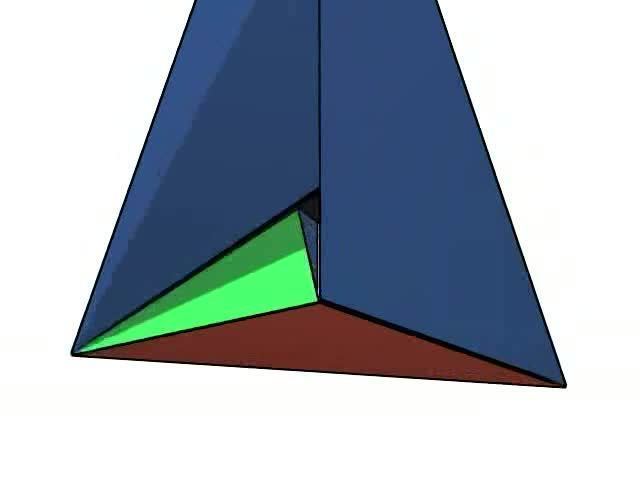Edges 21 Vertex configuration 3.3.3.3.3.3 | Vertices 7 Symmetry group C1, [ ], (11) | |
 | ||
In geometry, the Császár polyhedron ([ˈtʃaːsaːr]) is a nonconvex polyhedron, topologically a toroid, with 14 triangular faces.
Contents
This polyhedron has no diagonals; every pair of vertices is connected by an edge. The seven vertices and 21 edges of the Császár polyhedron form an embedding of the complete graph
Complete graph
The tetrahedron and the Császár polyhedron are the only two known polyhedra (having a manifold boundary) without any diagonals: every two vertices of the polygon are connected by an edge, so there is no line segment between two vertices that does not lie on the polyhedron boundary. That is, the vertices and edges of the Császár polyhedron form a complete graph.
If the boundary of a polyhedron with v vertices forms a surface with h holes, in such a way that every pair of vertices is connected by an edge, it follows by some manipulation of the Euler characteristic that
This equation is satisfied for the tetrahedron with h = 0 and v = 4, and for the Császár polyhedron with h = 1 and v = 7. The next possible solution, h = 6 and v = 12, would correspond to a polyhedron with 44 faces and 66 edges, but it is not realizable as a polyhedron. It is not known whether such a polyhedron exists with a higher genus (Ziegler 2008).
More generally, this equation can be satisfied only when v is congruent to 0, 3, 4, or 7 modulo 12 (Lutz 2001).
History and related polyhedra
There are other known polyhedra such as the Schönhardt polyhedron for which there are no interior diagonals (that is, all diagonals are outside the polyhedron) as well as non-manifold surfaces with no diagonals (Szabó 1984, 2009).
The Császár polyhedron is named after Hungarian topologist Ákos Császár, who discovered it in 1949. The dual to the Császár polyhedron, the Szilassi polyhedron, was discovered later, in 1977, by Lajos Szilassi; it has 14 vertices, 21 edges, and seven hexagonal faces, each sharing an edge with every other face. Like the Császár polyhedron, the Szilassi polyhedron has the topology of a torus.
